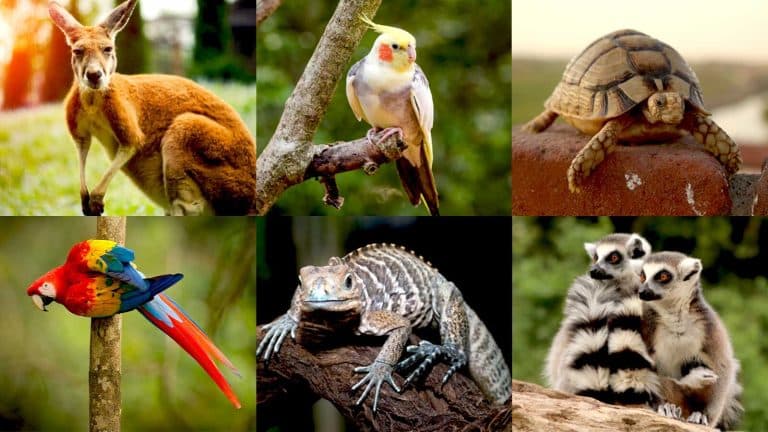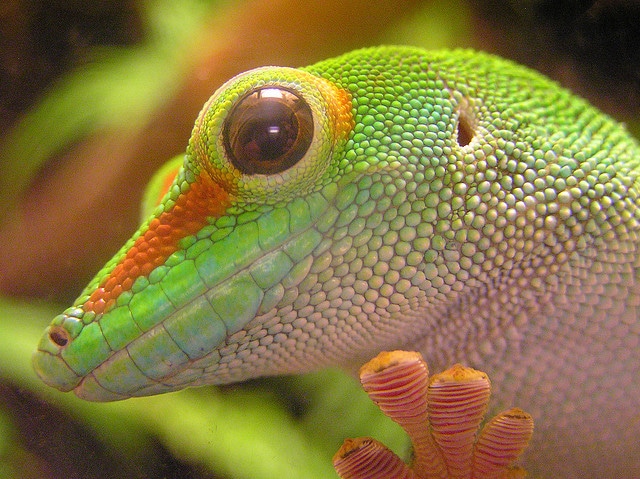A Walkthrough Massive Snake – Anaconda
Ever heard of Anaconda, the world’s largest snake? If not, hold your breath and carry along with us till the end to explore some amazing facts about this huge reptile.
Anaconda is a large and powerful snake mostly found in tropical regions of South America. They are well-known around the globe for their enormous size and for their swimming skills, which makes them a skilled hunter. These reptiles aren’t venomous but more dangerous because they utilize their incredible strength to swallow their prey. But this isn’t even a bit of information about them; you can call it a glimpse.
Browse below to learn more about anaconda, its behavior, and its characteristics that will leave you astonished.
What is the Biggest Snake in The World?
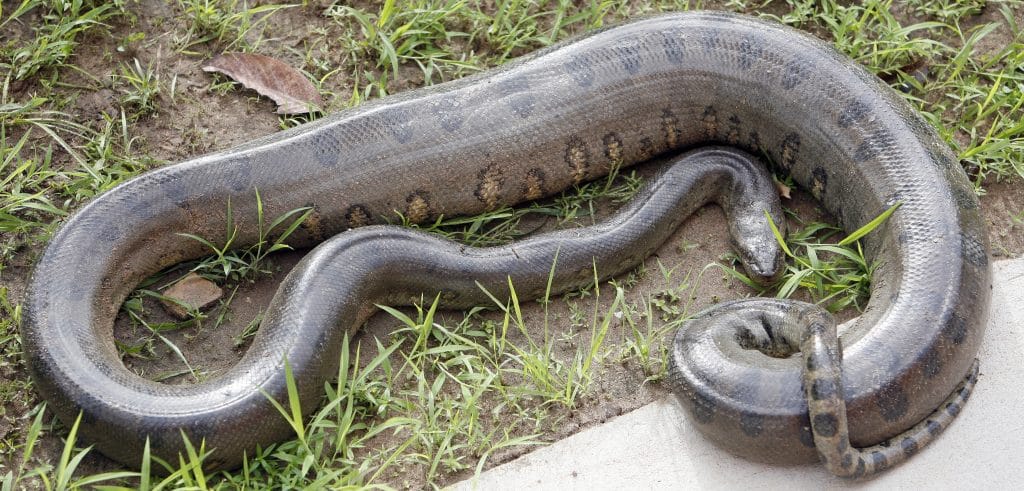
The biggest snake in the world is the Green Anaconda (Eunectes Murinus), which is frequently called Common Anaconda as they are the most commonly found species. Green anacondas are widely popular for their massive size and strength. They are the natives of the Amazon forest in South America and can grow as much as 33 feet (10 meters) lengthwise and weigh more than 880 pounds.
Remember, the Green Anaconda is the largest snake in terms of width and girth, but when it comes to length, usually reticulated python (Python Reticulatus) overpowers.
Characteristics of Anaconda
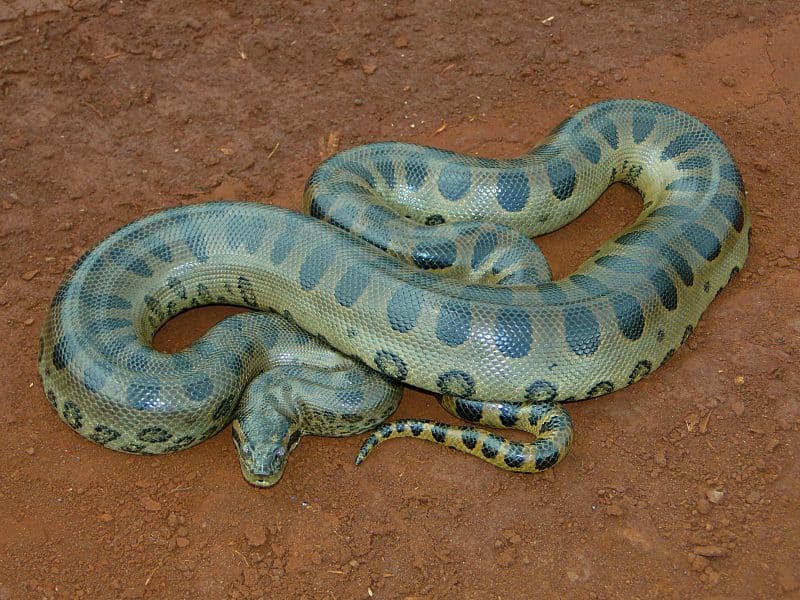
- Size: As said, the anaconda is the biggest snake in the world, having lengths up to 30 ft or more. Further, they possess a heavy body, which makes them look humongous.
- Appearance: Usually, the huge creature is dark green with black spots on its back. This color makes them hide in the swampy habitat, helping them swallow their target.
- Habitat: Anaconda is mostly found in the Amazon rainforest and some other parts of South America. Usually, they inhabit freshwater like swamps, rivers, and lakes.
- Behavior: These reptiles are semi-aquatic. This means they spend a good amount near or in water. They are excellent swimmers and ambush predators, i.e., hide, wait for prey, and then strike and swallow.
- Diet: Anaconda is a carnivorous reptile that feeds on various prey like fish, birds, mammals, and other reptiles.
- Constriction: Anaconda is a constriction snake. This means they capture and attack their prey by wrapping their strong and muscular body around and then squeezing, leading to suffocation.
- Reproduction: Anaconda is an ovoviviparous reptile, i.e., the eggs are hatched within which they give birth to young ones.
- Ecosystem: Anaconda play an important role in the Amazon ecosystem by helping to control the population of their prey species. Further, it has been found they are host to various parasites and, hence, an important part of the food web.
Undoubtedly, the Anaconda is a fascinating huge reptile, but it brings along many myths and exaggerations. Foremost among them is they eat or swallow humans and large animals. But it isn’t true at all.
Overview of Anaconda Height, Weight, Lifespan, Breeding
1. Height and Weight
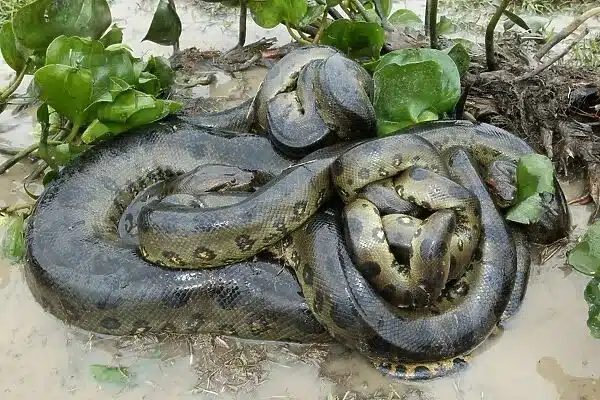
Specific species of Anacondas, like green anacondas, grow over 20 feet (6 meters approx) or more in length. They weigh 550 pounds (250 kilograms) or even more. Remember, the mentioned amounts are the extremes; most Anaconda are smaller, lengths of 10-15 feet, and weigh anywhere between 100-200 pounds.
Other species of Anaconda, such as the yellow or dark spotted Anaconda, are smaller in size, 6-12 feet, and weigh around 10-50 pounds.
2. Breeding
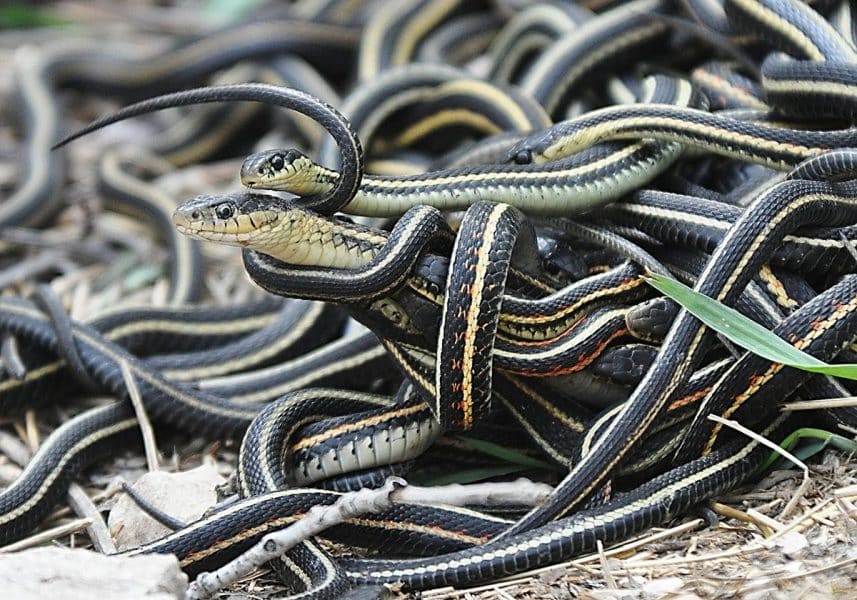
As mentioned above, Anaconda reproduce by sexual reproduction, i.e., male and female Anaconda mate to produce offspring. Their mating season is usually during the rainy season when the water level is at its peak, making it easier for these aquatic snakes to find each other. Female anaconda are generally larger than male ones.
The mating process of these reptiles occurs in three steps: scent marking, coiling, and copulation. Once the male anaconda has successfully copulated, the female stores sperm for some time before fertilizing it. This allows her to delay the development of embryos until the surrounding conditions are good enough for giving birth. Once the condition suits, female anacondas give birth to 20-40 snakelets(baby snakes). These babies are large, around 2 feet.
3. Lifespan
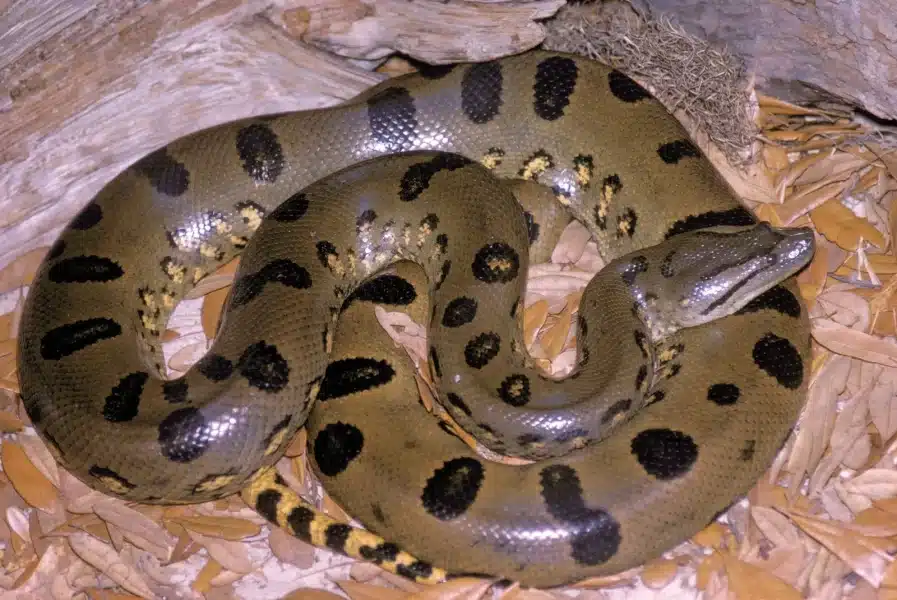
Anaconda usually has a longer lifespan than a snake. They live for around 10-20 yrs;, in some cases, the limit goes beyond 20 yrs. The mentioned lifespan may vary depending on habitat, food availability, etc.
Different Species of Anaconda
Anaconda isn’t the name of only snake; it refers to a group of large and powerful snakes that belong to the Boa family. Though there are various species in the Boidae family, only the four among them are of true anaconda.
The listed points below will enlighten you on the same:
1. Green Anaconda (Eunectes Murinus)
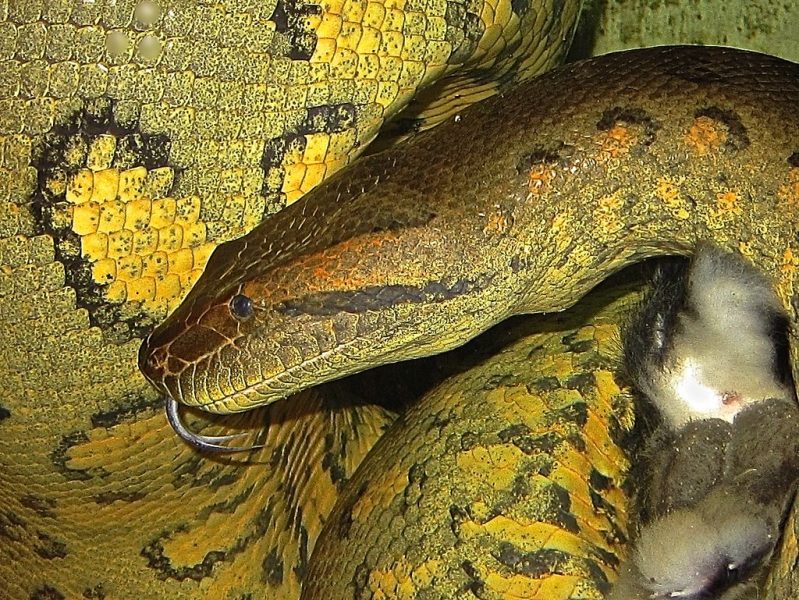
The green Anaconda is the largest and heaviest of all the snake species in the world. It is mostly found in the Amazon basin of South America and countries like Brazil, Venezuela, Colombia, and some parts of Northern Bolivia. They are widely known for their green coloration and are excellent swimmers.
2. Yellow Anaconda (Eunectes Notaeus)
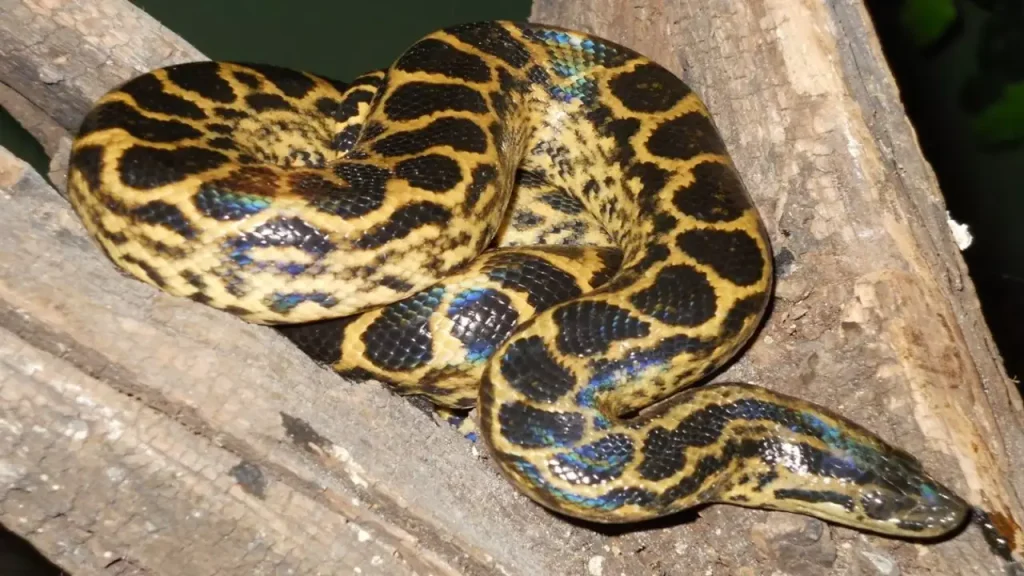
Yellow Anaconda are quite smaller, especially than green ones. These snakes have a yellow or tan background with dark brown or black markings. It is found in similar regions as the green Anaconda. Additionally, it can be found in Argentina, Paraguay, and Brazil.
3. Dark-Spotted Anaconda (Eunectes Deschauenseei)
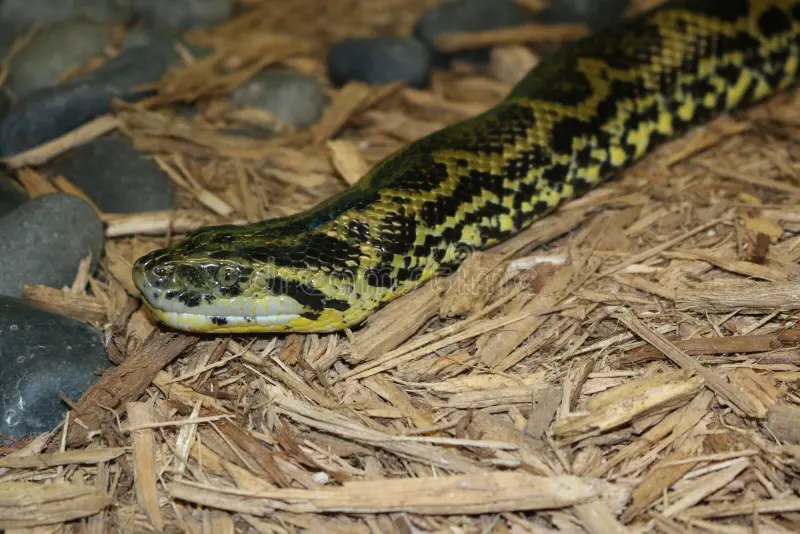
This species isn’t very popular, and that’s why there is limited information available. They are frequently seen in northeastern South America, Venezuela, and the Guianas.
4. Bolivian Anaconda (Eunectes Beniensis)
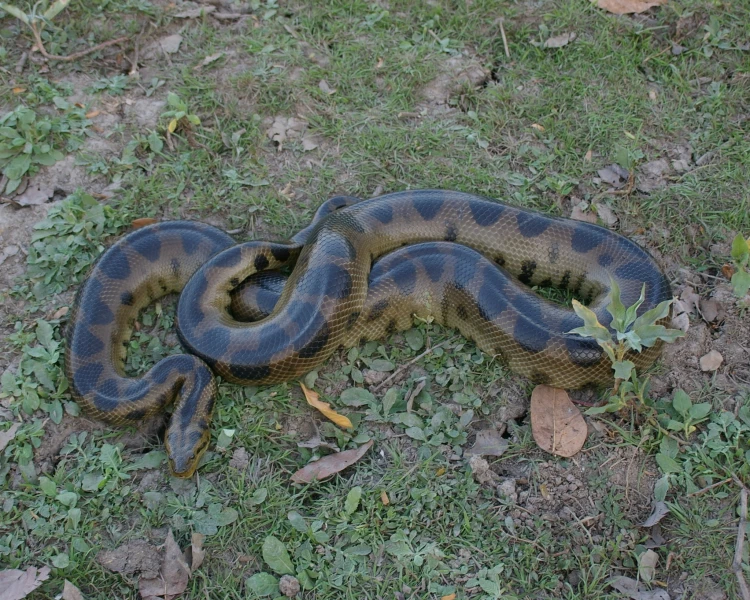
Bolivians are the other less-known species of Anaconda and are found in parts Similar to the Dark-Spotted Anaconda; these are also less studied and less well-documented; hence, limited information is available.
How Fast Does Anaconda Grow?
The answer to this is a bit complex, but here is a simpler version. Firstly, the growth rate of Anaconda snakes varies greatly as it depends on factors like environmental conditions, food availability, and age. During the early years, they grow rapidly, usually several feet in length in the first or two years of their life.
However, this rate decreases as they mature, which is a few feet lengthwise over many years. Consistent food and good environmental conditions elevate the growth rate.
Unknown Facts About Anaconda
- Anacondas aren’t the longest snakes, though they are frequently referred to in arguments between anaconda pythons. Green Anaconda holds the title for being the heaviest snake, but Reticulated Python is the longest.
- Many people think anaconda is a single snake. Still, they are a group of large snakes that come in different species, like green Anacondas, yellow Anacondas, Dark-Spotted Anacondas, and Bolivian Anacondas.
- They are amazing swimmers and have the potential to stay in water for long periods and practice ambushing prey.
- Unlike snake species that lay eggs and protect their offspring, anaconda babies are independent from birth. This means they survive on their own without any support.
- Anacondas are enormous and capable of swallowing their prey, often capybaras, deer, and more. Further, they have flexible jaws and can stretch their bodies to take in larger meals.
- Like other snakes like boas and pythons, Anaconda also have heating pits on their faces. This helps them know for any warm-blooded prey, even in the dark.
- Anacondas are nocturnal, i.e., they are most active at night and rest during the daytime.
- The mating of anacondas is intense. This means there is one female anaconda and up to 13 male Anaconda who fight among themselves to copulate.
- Female Anaconda are often larger and more powerful. During gestation, they can’t move much and eat one or more male Anacondas from the group.
- Anacondas are facing threats because of destruction and hunting. Though they aren’t critically endangered, research says their population is declining.
Other Large Snakes
1. Reticulated Python
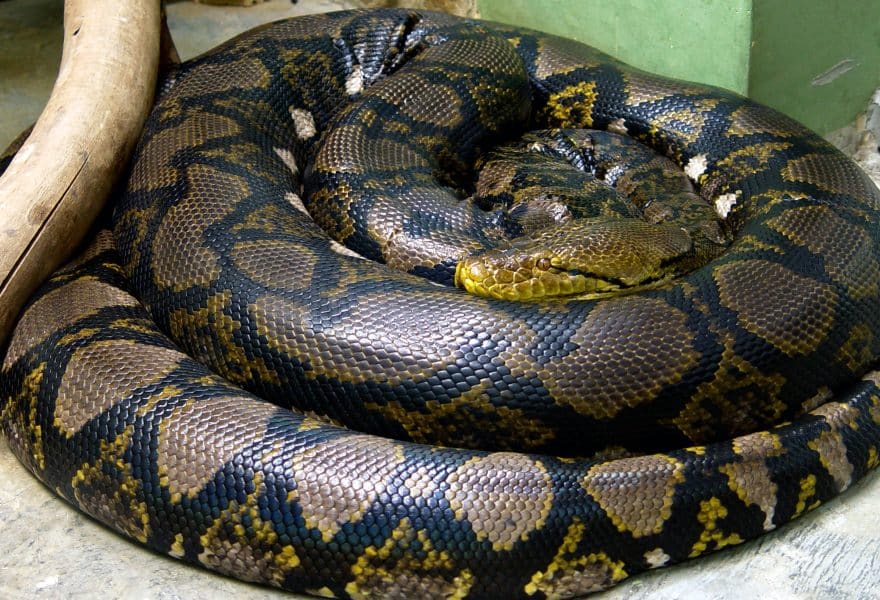
The reticulated Python holds the record for the world’s longest snake, with lengths of 32 ft and 91/2 inches. Pythons are non-venomous and have similar attacking techniques to anacondas, i.e., they wrap around their prey, constrict them till suffocation, and swallow once subdued. Their favorite prey are birds, rodents, and mammals such as monkeys, pigs, and antelope. They are found in various areas but most commonly in parts of Southeast Asia and Africa.
Nature Towards Humans: Usually, pythons are docile and, hence, don’t pose much threat. However, threatening them can lead to serious consequences, such as their bite will hurt a lot, and their constriction will break a few bones. And the best part is that unless it’s a very big python, chances are very high of your survival.
2. RattleSnake
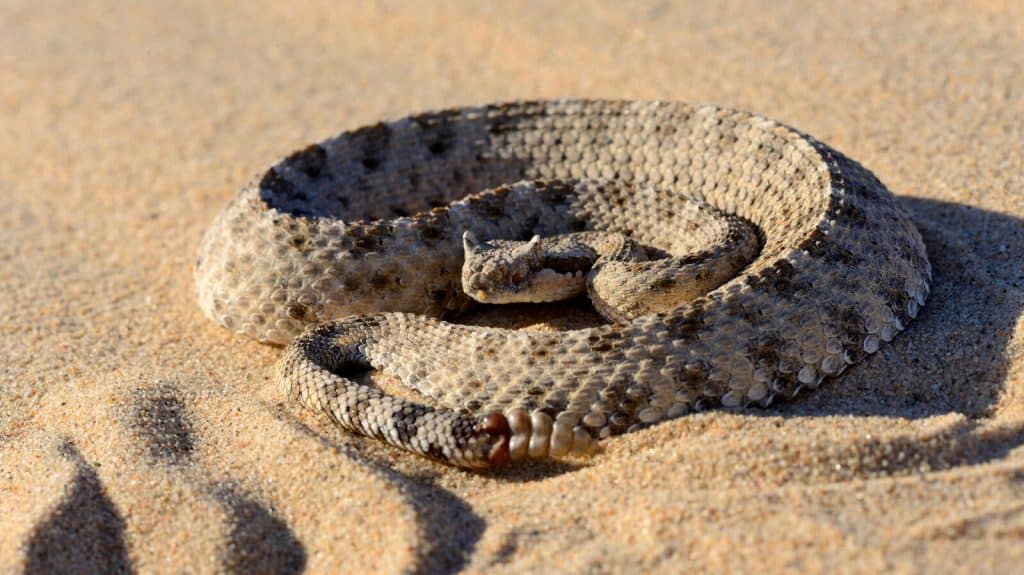
Rattlesnakes are in contrast to the python’s non-venomous nature and hence are dangerous. These are mostly found in North and South America. What makes them recognizable is the rattles at the end of the tail, which they use as a warning signal to be away from them. These snakes don’t grow much compared to pythons and anacondas; generally, they grow up to 8 feet. Their venomous bite makes their favorite prey, rodents and small mammals, incapable of moving.
Nature Towards Humans: Though rattlesnakes are venomous, there are a few instances of them biting humans. They avoid humans until they feel safe; however, they don’t take seconds to attack if they’re threatened, provoked, or surprised. Drew Dittmer, DWR Native Species Coordinator, confirms this fact.
3. King Cobra
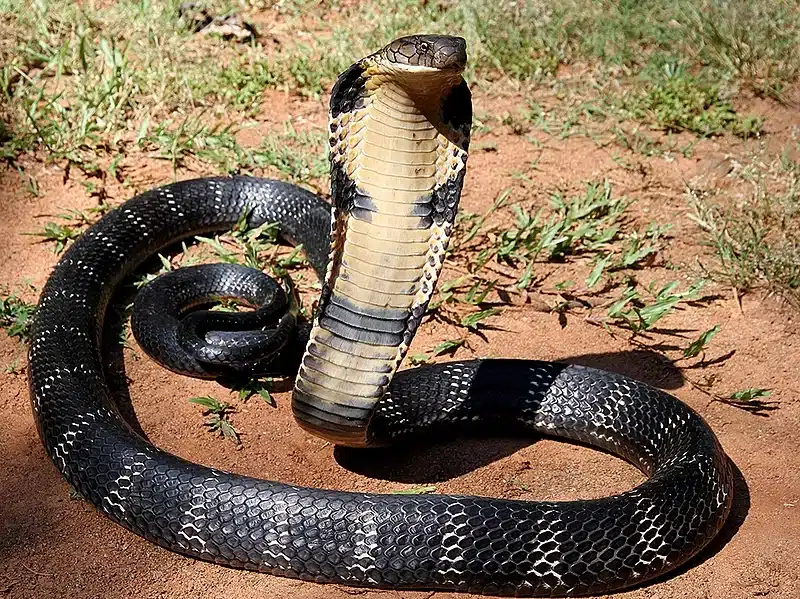
Python is the longest non-venomous snake, but the King Cobra is the world’s longest venomous snake, with the highest length recorded at 18 feet 4 inches. However, a king cobra’s average length is 11-13 inches, which is quite less when compared to an anaconda. Cobra’s venom isn’t the most potent, but their one bite can kill 20 people or large mammals like an elephant. They are mostly known for their size, color, and hood, which expands when threatened. Their favorite prey are snakes, including the evil ones. Further, cobras are popular for their intelligence and ability to respond to threats effectively.
Nature Towards Humans: Cobras, similar to pythons and rattles, avoid humans, flaring out their hoods and making hiss sounds. But as with others, Cobra also attacks in self-defense or if they feel a threat to their egg.
4. Burmese Python
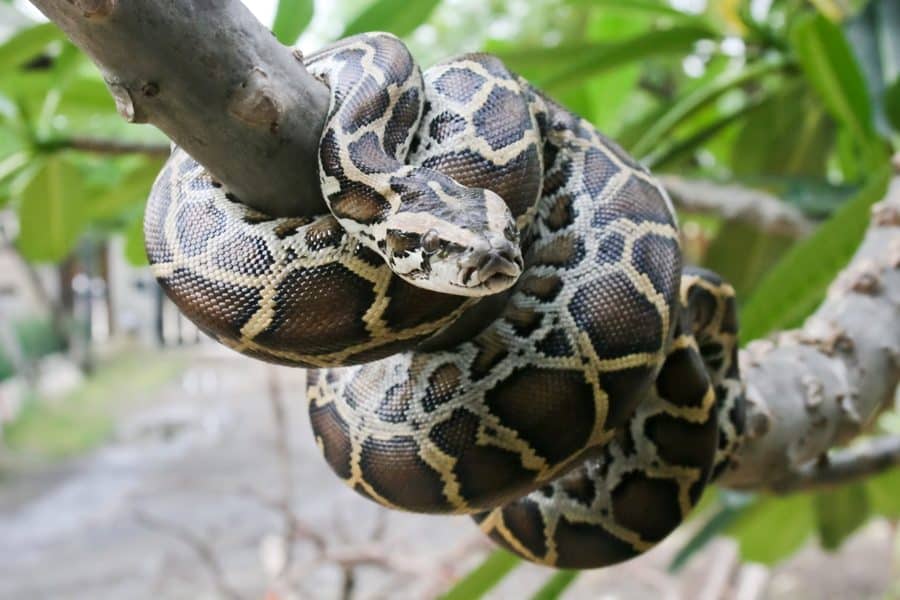
Burmese are another large species of Python commonly found in South East Asia. They are the most frequently kept pet snakes owing to their adorable patterns, highlighting blotches on a light background, and their quiet nature. Burmese Pythons can grow as large as 20 feet and are constrictors. They aren’t venomous, but their huge size and strength make them powerful predators. Notably, Burmese have become invasive, as some facts say they pose ecological challenges.
Nature Towards Humans: Burmese are docile or secretive like reticulated pythons unless provoked. When instigated, they attack on the front of the person and not on the side or rear.
5. Cuban Boa
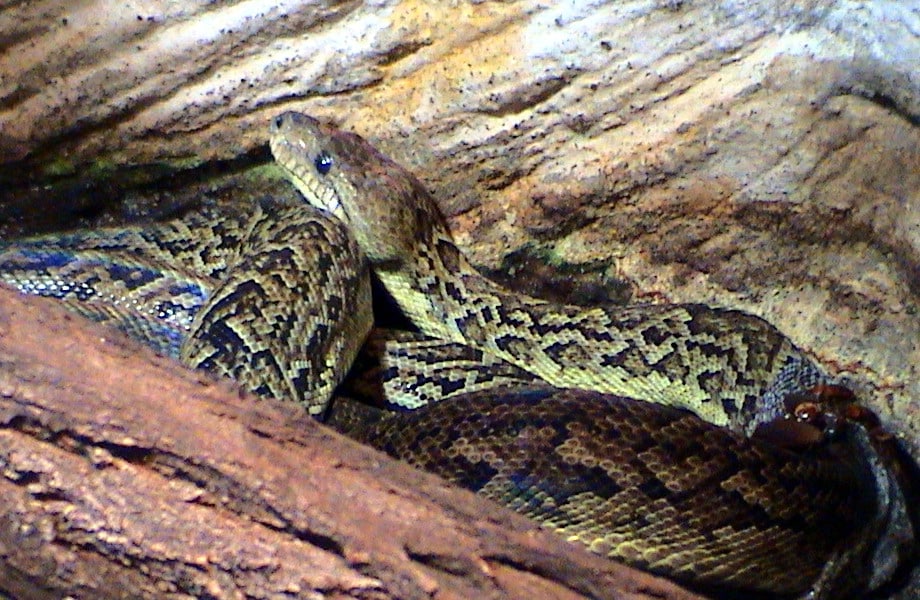
Cuban Boa, scientifically known as Chilabothrus Angulifer, are among the largest snake species, with the highest recorded as 18.5 ft, which equals 5.5 meters. However, on average, they are 3-4 meters long. They aren’t commonly found except in the Caribbean Island of Cuba. They belong to the Boidae family, which includes some of the largest snakes, like pythons and anacondas. Cuban Boa are nocturnal, i.e., they are most active at night and found in pits, rock piles, and on agricultural land.
Nature Toward Humans: Cuban boas are non-aggressive toward humans. Further, they are shy, which makes them avoid human contact. As said, these are nocturnal, so they rarely interact with humans, as many people are active during daylight.
Conclusion
The anaconda is the world’s largest snake owing to its massive weight and enormous girth. Still, it isn’t the longest as a reticulated python often surpasses green Anaconda length.
These large reptiles are widely known for their huge body and length. But remember, the general misconception people have, and anaconda movies show that anacondas are a threat to humans isn’t true. In reality, it has been found they often ignore humans.
We hope the article helps! Was it easy to follow and entailed everything you were looking for? Comment below if you need any specific info on the same. Have you ever seen an anaconda?
If yes, which one, green or yellow?
Frequently Asked Questions
Which is the Largest Species of Anaconda?
The Green Anaconda (Eunectes Murinus) is the largest known species of Anaconda. They weigh over 20 feet in length and weigh between 200 and 500 pounds. These species of Anaconda are suitable for aquatic habitats where they live, hide, and wait for prey to swallow them at once.
Is Anaconda Dangerous for Humans?
Anaconda is large enough to swallow humans. However, they don’t pose a threat. There are only a few mishaps where they are found attacking humans. Anacondas tend towards or say their favorite prey are fish, birds, and mammals.
How Do Anacondas Attack and Eat?
Anaconda is mostly known for its large and powerful body, and that’s its main weapon. Firstly, they wrap around the prey and then use their muscular body to constrict and suffocate prey. Once they are repressed, they swallow the prey at once.
Where Can One Find an Anaconda?
Anaconda is mainly found in the Amazon rainforest, South America, and in countries like Brazil, Venezuela, and Columbia. They live in freshwater like swamps, marshes, and more. Nowadays, they are found in zoos, like Louisville Zoo, which has green and yellow Anaconda.
How Do Anacondas Reproduce and Care for Their Babies?
Anaconda is ovoviviparous; they give birth to young ones, but the eggs are hatched within them. At once, a female anaconda gives birth to around 40 snakelets or more. They don’t care much for their offspring; young anaconda is independent from birth.


